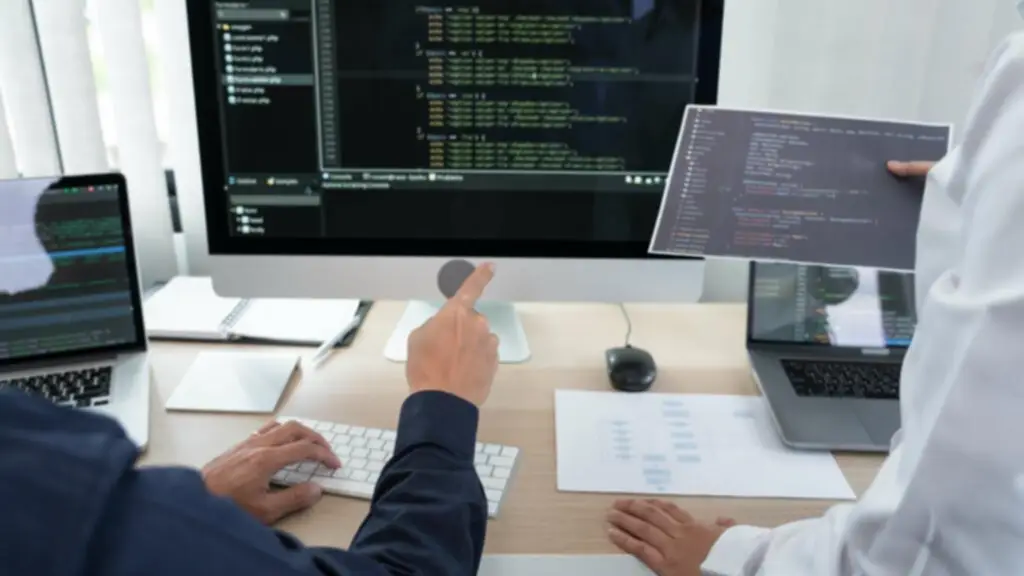Overfitting In Machine Learning Explained
One will never compose an ideal dataset with balanced class distributions, no noise and outliers, and uniform knowledge distribution in the real world. You encode the robotic with detailed moves, dribbling patterns, and taking pictures varieties, intently imitating the play ways of LeBron James, knowledgeable overfitting vs underfitting in machine learning basketball player. Consequently, the robotic excels in replicating these scripted sequences. However, if your mannequin undergoes overfitting, the robotic will falter when faced with novel game situations, maybe one by which the group needs a smaller player to beat the protection.
- However, should you pause too early or exclude too many essential features, you could encounter the other drawback, and as an alternative, you could underfit your mannequin.
- In sensible phrases, underfitting is like attempting to foretell the climate primarily based solely on the season.
- (For an illustration, see Figure 2.) Such a mannequin, though, will typically fail severely when making predictions.
- Overfitting often arises from overtraining a mannequin, using too many features, or creating too advanced a model.
- Training a model for an prolonged interval can lead to overtraining, also referred to as overfitting, where the model turns into too tailor-made to the coaching knowledge and performs poorly on new information.
Study Extra About Linkedin Privateness
Overfitting occurs when the model is too advanced and suits the training data too intently. Underfitting happens when a model is just too easy resulting in poor performances. While it might sound counterintuitive, including complexity can enhance your model’s ability to deal with outliers in data. Additionally, by capturing more of the underlying information points, a complex mannequin could make more correct predictions when offered with new information points. However, hanging a stability is essential, as overly advanced models can result in overfitting.
Evaluating Mannequin Performance And Generalization
Encord Active provides a spread of model quality metrics, including accuracy, precision, recall, F1-score, and space beneath the receiver operating attribute curve (AUC-ROC). These metrics help practitioners perceive how properly their model generalizes to unseen data and determine the information points which contribute to overfitting. K-Fold Cross-Validation is one other resampling approach used to estimate a model’s performance and generalization functionality. This course of is repeated K times, with every fold serving as the validation set once. The last performance metric is calculated as the average across all K iterations.
Overfitting And Underfitting In Machine Learning
Your major goal as a machine learning engineer is to construct a mannequin that generalizes well and completely predicts appropriate values (in the dart’s analogy, this will be the center of the target). Underfitting occurs when a model is not in a place to make correct predictions based on training data and therefore, doesn’t have the capability to generalize well on new knowledge. Overfitting occurs when a machine learning model becomes overly intricate, essentially memorizing the coaching information.
What Is Overfitting And Underfitting?

Understanding the bias-variance tradeoff can present a solid basis for managing model complexity effectively. A useful visualization of this concept is the bias-variance tradeoff graph. On one extreme, a high-bias, low-variance model might result in underfitting, as it constantly misses important trends in the information and provides oversimplified predictions.
But, when a testing dataset is offered to the identical mannequin, there will be a high error in the testing dataset (high variance). The error produced from the training dataset is named Bias and the error by testing data set is Variance. The purpose of any mannequin might be to obtain a low bias and low variance model. Underfitting is one other frequent pitfall in machine learning, the place the model cannot create a mapping between the input and the goal variable. Under-observing the features results in a higher error in the training and unseen knowledge samples.
For instance, you’ll have the ability to try to exchange the linear mannequin with a higher-order polynomial mannequin. For any of the eight potential labeling of factors presented in Figure 5, you’ll find a linear classifier that obtains “zero coaching error” on them. Moreover, it is obvious there isn’t a set of four points this speculation class can shatter, so for this instance, the VC dimension is three.

The model is educated on a limited sample to evaluate how it will perform generally when used to make predictions on the unseen information. After all of the iterations, we average the scores to evaluate the performance of the overall mannequin. K-fold cross-validation is amongst the most common strategies used to detect overfitting.
A model learns relationships between the inputs, referred to as options, and outputs, referred to as labels, from a training dataset. During training the model is given each the features and the labels and learns the way to map the previous to the latter. A trained mannequin is evaluated on a testing set, the place we solely give it the features and it makes predictions. We examine the predictions with the identified labels for the testing set to calculate accuracy.
This results in overfitting and the machine studying mannequin performs poorly on unseen knowledge. In each eventualities, the model cannot establish the dominant pattern throughout the coaching dataset. However, in contrast to overfitting, underfitted models expertise excessive bias and less variance within their predictions. This illustrates the bias-variance tradeoff, which happens when as an underfitted mannequin shifted to an overfitted state.
Overfitting primarily occurs when a model is excessively complex, similar to having too many parameters relative to the number of observations. A machine is skilled (Supervised Learning) to be taught the what is a ball and what is not? So, the machine is fed with many information where all kinds of ball photographs are enter to the model. Now, the mannequin has to study what traits a ball has and the means to acknowledge it. Let us now see how a Underfit, greatest match and Overfit model would look like. While within the progress of discovering the most effective match line, it doesn’t essentially imply the line ought to cover every single point in the dataset.
The finest match line comes when each these parameters are sufficiently low. Thus, in the training dataset itself, there is a excessive probability of incidence of error (high bias). Regularization discourages studying a more advanced model to scale back the danger of overfitting by making use of a penalty to some parameters. L1 regularization, Lasso regularization, and dropout are strategies that help cut back the noise and outliers within a model.
After that time, nonetheless, the model’s capacity to generalize can deteriorate as it begins to overfit the training knowledge. Early stopping refers to stopping the training course of before the learner passes that time. Some examples of models which are usually underfitting embrace linear regression, linear discriminant analysis, and logistic regression. As you possibly can guess from the above-mentioned names, linear models are often too easy and have a tendency to underfit extra in comparison with different fashions. However, this is not all the time the case, as models also can overfit – this sometimes occurs when there are more options than the variety of instances in the training information. Below you can see a diagram that provides a visual understanding of overfitting and underfitting.
Transform Your Business With AI Software Development Solutions https://www.globalcloudteam.com/
